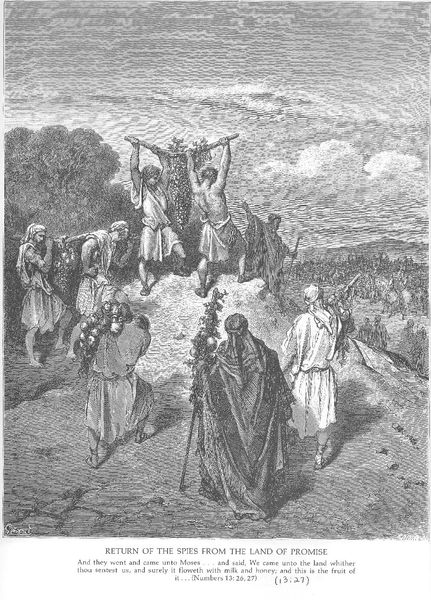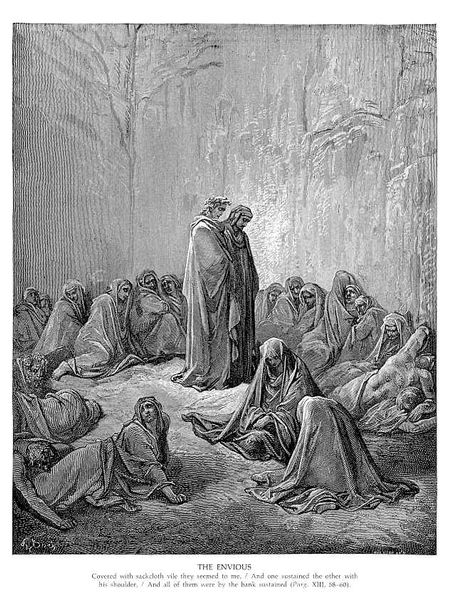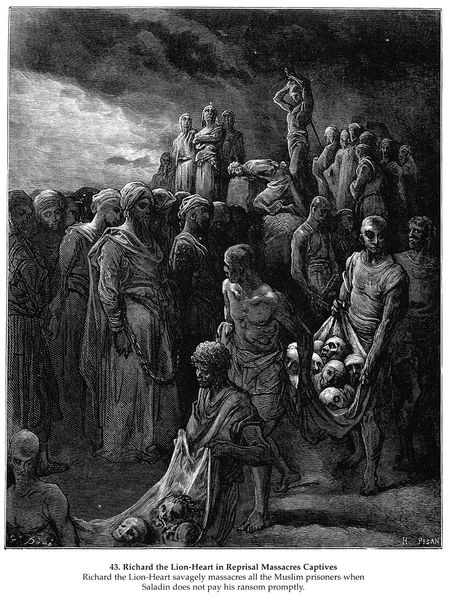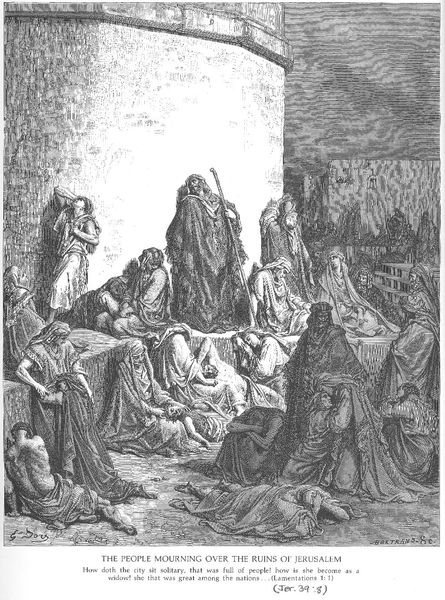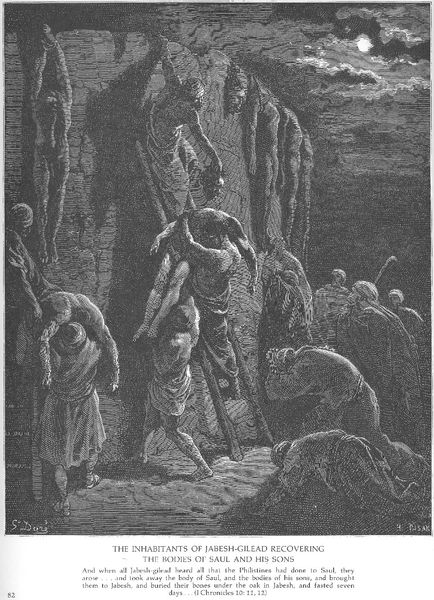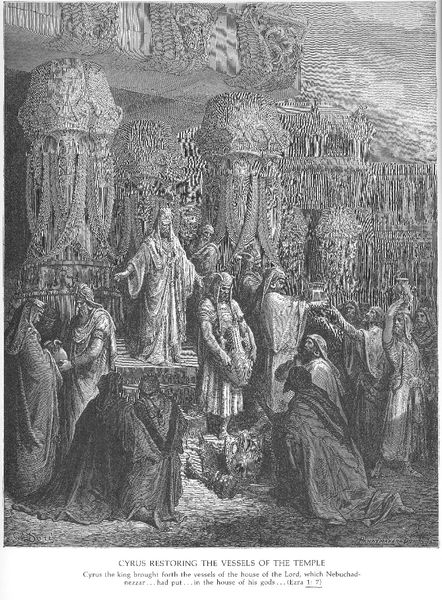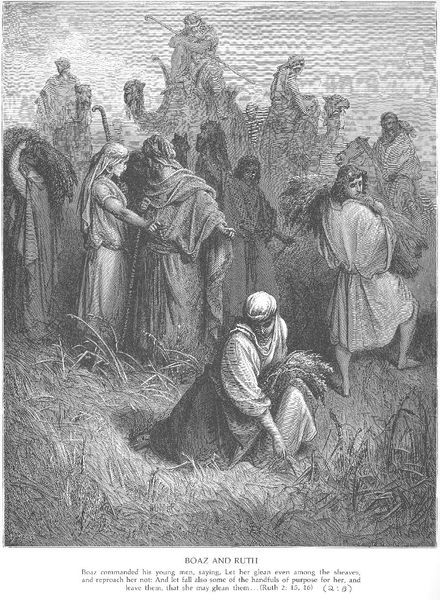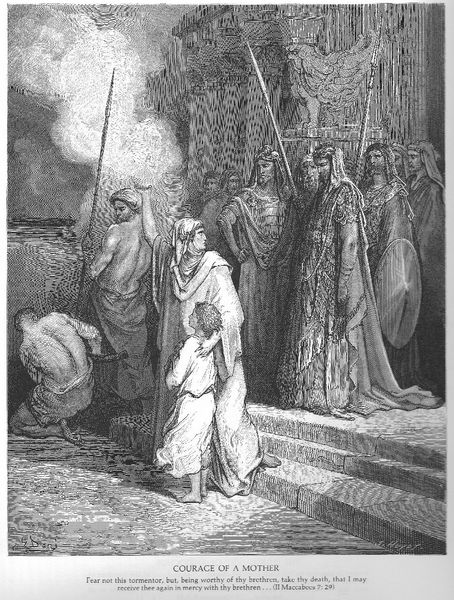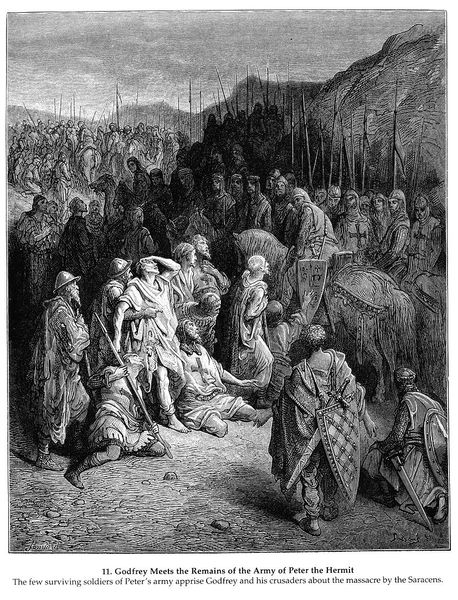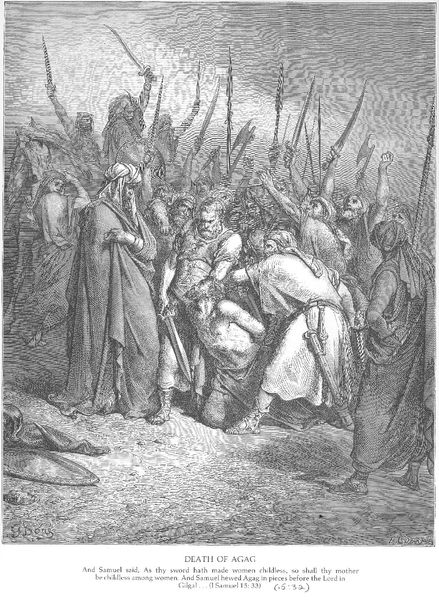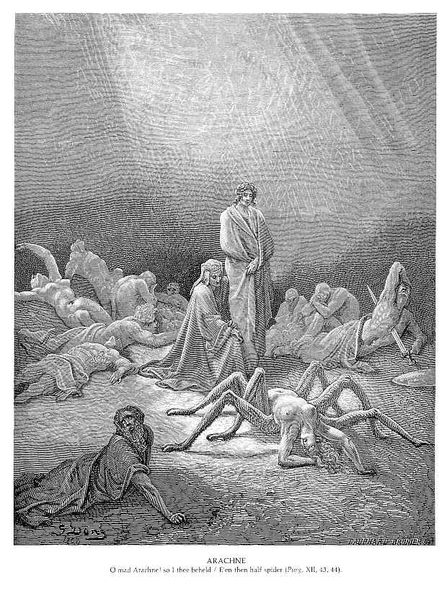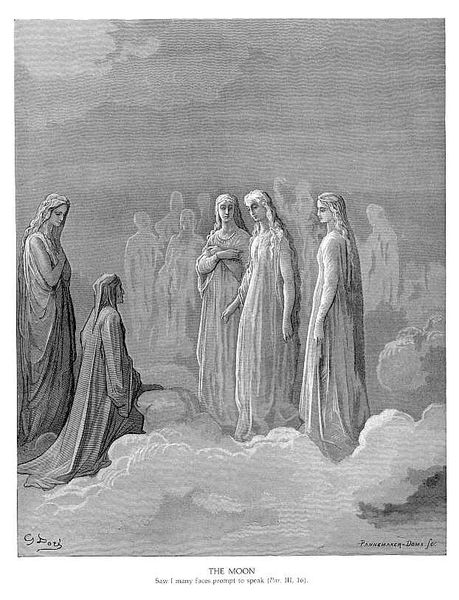
drawing, print, photography, engraving
#
drawing
#
narrative-art
# print
#
old engraving style
#
figuration
#
photography
#
portrait reference
#
romanticism
#
history-painting
#
engraving
Copyright: Public domain
Curator: Before us we have “The Sculptures,” a print created by Gustave Doré. There's no exact date for it, but it showcases Doré’s engraving skills. Editor: The intense shading immediately creates a solemn, spectral mood, wouldn't you agree? The sharp contrasts certainly bring out a heightened drama in what seems like an encounter with figures from beyond. Curator: Indeed. The composition directs our gaze upward, doesn’t it, tracing the supplication of the woman on the left towards the gathering figures who stand further away near those stark columns? Semiotically, we might consider this arrangement to signal a hierarchy or chasm between the mortal and the… otherworldly. Editor: Yes, and the means of production—etching—adds to the ethereal quality, that gritty feel and faded light give off a sense of aged narratives. This affects my understanding as a viewer, considering its relation to religious or historical illustration practices. It speaks to something about labor itself—creating images for reproduction across a wide population... quite different than an expensive painted canvas for a privileged few. Curator: Your focus on reproducibility raises fascinating points about access. On one hand, one could interpret its existence as evidence for social leveling, and democratization of visual art. Alternatively, in this particular Romantic style, which recalls grandiose, epic subject matter—perhaps Doré employed such widespread mediums in order to establish canonicity—thereby paradoxically reenforcing earlier aesthetic and cultural standards of “high” art. Editor: True. While Doré worked within traditions and standards of illustration and engraving, let's remember what that also means historically: from scientific diagrams to political cartoons, his images reflect a growing print culture and a burgeoning, modern kind of visuality itself. That is what lingers with me. Curator: And in considering this afterlife through reproductions—each viewing carries echoes, doesn't it, both of the divine encounter it stages and of the material history that permits its distribution and ongoing cultural significance. Editor: Ultimately, examining both the materiality and the formalism invites us to confront these layers embedded in “The Sculptures”—historical weight, print technology, and how the artist manipulates the visual to communicate emotional depth.
Comments
No comments
Be the first to comment and join the conversation on the ultimate creative platform.
